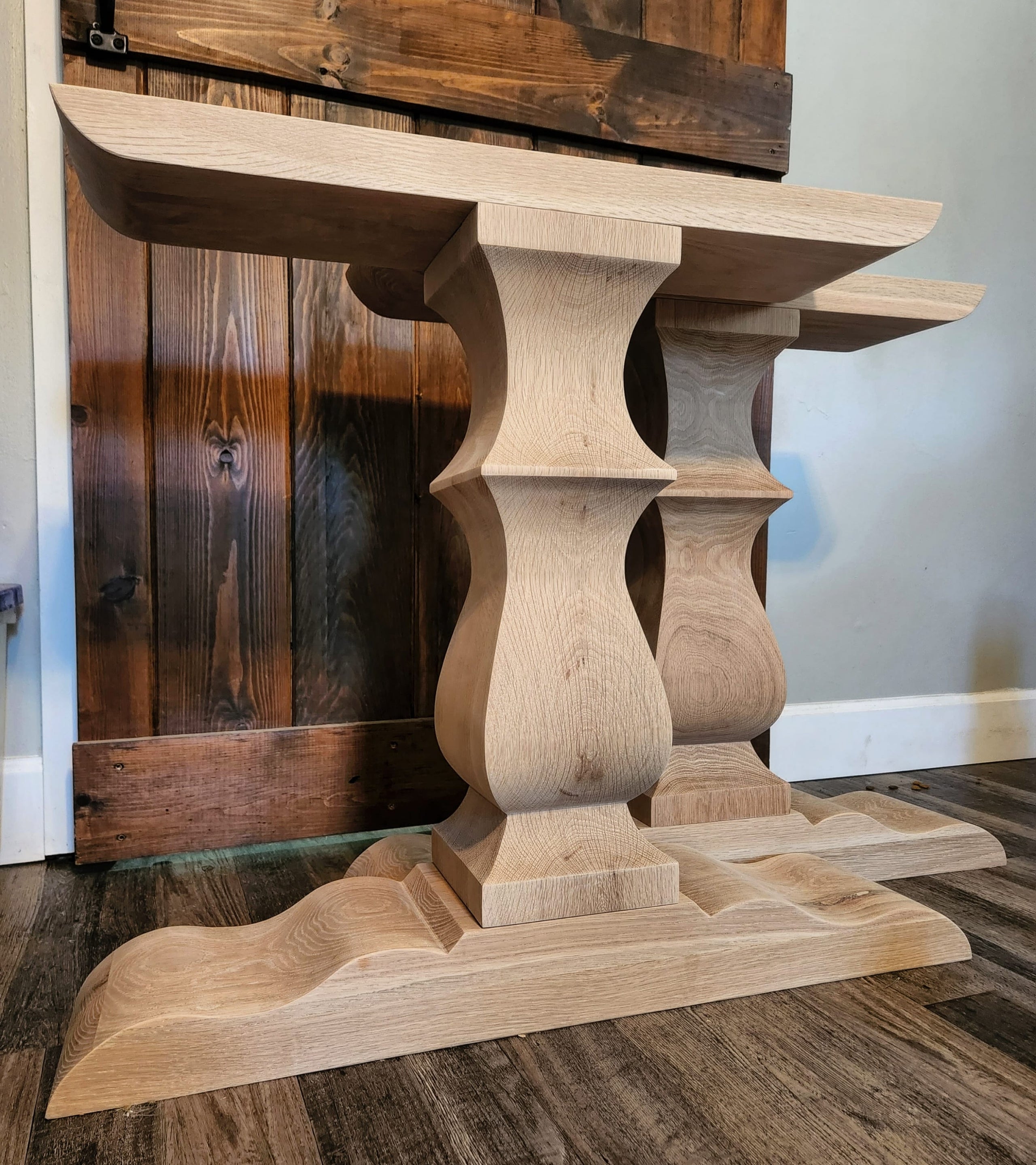Change Your Furniture with Costs Dining Table Legs Wood Options
Change Your Furniture with Costs Dining Table Legs Wood Options
Blog Article
Trick Elements to Bear In Mind for Eating Table Legs Wood Choices
When picking wood for dining table legs, several important factors warrant mindful consideration to guarantee both performance and aesthetic charm. The option of timber kind, defined by its longevity and distinct grain patterns, plays an essential role in the general style and durability of the item.
Wood Types and Qualities
When choosing timber for eating table legs, it is necessary to recognize the one-of-a-kind qualities of different wood kinds. Various timbers supply distinctive benefits and disadvantages, affecting both the resilience and visual allure of the ended up item.
Oak, understood for its outstanding resilience, also features a prominent grain that can include character to the table. Cherry timber, with its abundant color that grows over time, offers an extravagant look yet might need more upkeep to avoid scrapes.
On the other hand, softwoods like yearn and fir are more budget-friendly and simpler to deal with, yet they are much less resilient than woods. Pine is lightweight and features a warm, rustic look, making it a favored choice for informal dining setups. Nevertheless, it is more prone to damages and scratches.
Comprehending these qualities will certainly help in making a notified decision to ensure the legs of the eating table fulfill both practical and aesthetic requirements.
Grain Patterns and Appearance
The timber's grain is not just an aesthetic quality; it imparts an one-of-a-kind personality and charm to each piece. Different wood types display unique grain patterns, varying from the straight lines of maple to the intricate swirls of oak and the striking figure of walnut.
Furthermore, the orientation and scale of the grain can influence the viewed size and style of the table. For example, larger, extra noticable grains may lend a strong, remarkable impact, while finer, subtler grains can create a refined, underrated look. In addition, the completing process can further improve these patterns, highlighting the natural elegance of the timber and drawing out rich tones.
Eventually, the option of grain pattern must harmonize with various other layout components, such as the tabletop and bordering furniture, making sure a natural visual that elevates the eating experience. Thoughtful choice of wood grain not just adds to the table's elegance however also shows the proprietor's taste and design.
Durability and Strength
The resilience and strength of dining table legs are vital factors to consider for making certain long life and security in any kind of eating space. Picking the appropriate timber is critical, as different types display differing levels of durability.

Ultimately, purchasing high-quality wood and robust construction techniques will yield a table that stands the examination of time, while providing a dependable foundation for numerous meals shared amongst friends and family. Focusing on resilience and toughness guarantees that your table remains practical and visually pleasing for years to come.
Maintenance and Care
Proper upkeep and treatment are important for preserving the sturdiness and stamina of dining table legs made from wood. Normal cleansing is necessary; utilizing a soft, damp fabric ensures that dust and debris do not collect, which can result in scratches and monotony. It is recommended to avoid harsh chemicals or unpleasant products that can harm the surface.
Additionally, using a suitable wood gloss or wax periodically can aid keep the luster and shield the wood from dampness and spills. Nevertheless, it is important to follow the supplier's suggestions regarding the see it here sort of product to utilize, as certain surfaces might react detrimentally to certain chemicals.
Humidity and temperature level fluctuations can likewise affect wood table legs, causing them to warp or crack. It's finest to position the table far from direct sunlight and warm resources. Addressing these without delay can avoid additional damages. if the table legs have any kind of scratches or damages.
Finally, periodically evaluating the joints and screws for tightness is very important to keep structural stability (Dining Table Legs Wood). By sticking to these upkeep practices, home owners can guarantee their wood table legs stay practical and appealing for years to come
Environmental Considerations
When picking timber for eating table legs, it's vital to take ecological factors to consider right into account. The sourcing and sustainability of timber are vital in minimizing ecological impact. Going with wood from licensed sources, such as those recommended by the Woodland Stewardship Council (FSC), guarantees that the lumber is gathered responsibly, promoting forest conservation and biodiversity.

Furthermore, local sourcing of wood decreases transport exhausts, sustaining neighborhood economic situations while lessening environmental impact. It is also recommended to be conscious of the wood's treatment and finishing procedures, as particular chemicals can be unsafe to both human health and the atmosphere. By prioritizing lasting wood options, consumers website here can add to ecological preservation while enjoying the resilience and beauty of their eating table legs.
Final Thought
In conclusion, choosing wood for dining table legs requires careful factor to consider of various aspects, including timber types, grain patterns, and longevity. Maintenance needs and ecological sustainability further impact wood choices, highlighting the significance of sourcing from licensed or reclaimed materials.
When choosing wood for dining table legs, several critical aspects warrant cautious factor to consider to ensure both performance and aesthetic allure.Proper maintenance and care are essential for protecting the durability and strength of dining table legs made from wood.When picking wood for dining table legs, it's vital to take environmental considerations right into account. By focusing on sustainable wood selections, consumers can contribute to environmental preservation while appreciating the toughness and appeal websites of their eating table legs.
In verdict, picking wood for dining table legs necessitates careful consideration of numerous factors, including wood kinds, grain patterns, and longevity. Dining Table Legs Wood.
Report this page